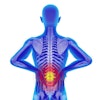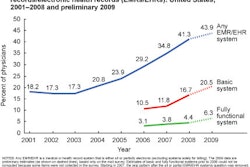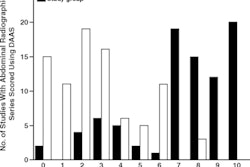ATLANTA - "Show me the money." This oft-quoted line memorialized in the film "Jerry Maguire" would be as appropriate a theme for the Healthcare Information and Management Systems Society (HIMSS) 2010 annual meeting, being held this week, as its official motto: "Change is everywhere ... opportunity is here."
The Georgia World Congress Center is packed to capacity with 27,000 registered attendees and more than 900 vendors filling more than 359,000 sq ft of loud, chaotic exhibit halls. While sights of magicians, jugglers, and even health fitness guru Richard Simmons dressed in a pink, sequined tutu are relegated to memories of HIMSS meetings of yore, this year's exhibit hall spectacle is just as entertaining. The frantic energy of users and vendors alike chasing Obama administration healthcare IT dollars is almost palatable.
Because funds from the American Recovery and Reinvestment Act (ARRA) to pay for IT adoption by the healthcare industry are tied to "meaningful use," that's become the buzzword of the day at HIMSS 2010. Nobody questions why PACS vendors exhibit at HIMSS anymore. PACS technology has finally been acknowledged as a pioneer of meaningful use by rank-and-file attendees.
The HIMSS Interoperability Showcase, bigger and better than ever, is the offspring of a joint initiative launched in 1998 by the RSNA and HIMSS. Meaningful use, of course, is the theme of this year's showcase, with 84 vendors demonstrating many of the 100 Integrating the Healthcare Enterprise (IHE) profiles using more than 70 clinical information systems.
Unlike the exhibit venue in which it resides, the Interoperability Showcase traditionally demonstrates without glitz or fanfare how patient health information can be shared across multiple clinical information systems to advance patient care and improve healthcare IT. It is designed as a series of connected health information exchanges enabled by IHE profiles and the Healthcare Information Technology Standards Panel (HITSP) specifications using national priority use cases.
A special highlight of the 2010 showcase includes the ability to review and cross-reference HITSP specifications with 2011 meaningful use recommendations, according to HIMSS Showcase organizer Joyce Sensmeier.
For 2010, 28 different clinical scenarios are being demonstrated that represent all facets of the utility of data exchange -- and if actually implemented en masse throughout the U.S., would radically improve efficiency and reduce healthcare delivery costs.
About one-fourth of these actually involve or could involve diagnostic image and report transfer utilization. One, the emergency admission of a person injured in an auto accident, specifically demonstrates how a PACS works within a hospital environment. But it adds an element that most radiologists don't experience. Emergency department staff telephone or text a patient's primary care physician to electronically obtain medical records, determining if the patient had prior cervical spine trauma that radiologists should know about when reviewing the emergency procedures.
Another profile demonstrates image distribution to various medical professionals not associated with the treatment facility, either using a DICOM CD or through a cloud archive, of the images and report of exams performed at a hospital following emergency surgery of a patient. Aspects of this scenario were replicated in a vacation accident profile. Mention was made by one demonstrator that this scenario may have actually taken place at the Winter Olympics using radiology modalities and clinical IT and PACS networks.
Unlike prior years during which the demonstrations were tightly controlled, the 2010 Interoperability Showcase was designed to encourage participants to select the profile demonstrations they wished to view, and the radiology profiles generated more than their fair share of attention. What seemed ironic was the fact that these healthcare IT professionals showed so much interest in seeing the workings of PACS, and yet the HIMSS conference includes only two educational sessions on image management.
Radiology information and image exchange represents meaningful use, and these healthcare IT managers appear to want to learn more about it. It will be interesting to see if Obama stimulus dollars add impetus to a discipline that is perceived at this conference as a pioneer in informatics implementation, but that is increasingly identified as just one component of the bigger picture: the electronic patient medical record in its totality.
By Cynthia E. Keen
AuntMinnie.com staff writer
March 2, 2010
Related Reading
PACS show strong growth, February 24, 2010
U.S. releases $1B in ARRA funds for HIT, February 12, 2010
HHS announces $38 million in health IT grants, December 24, 2009
$60 million issued for HIT research grants, December 21, 2009
Obama issues HIT funding, December 10, 2009
Copyright © 2010 AuntMinnie.com



















